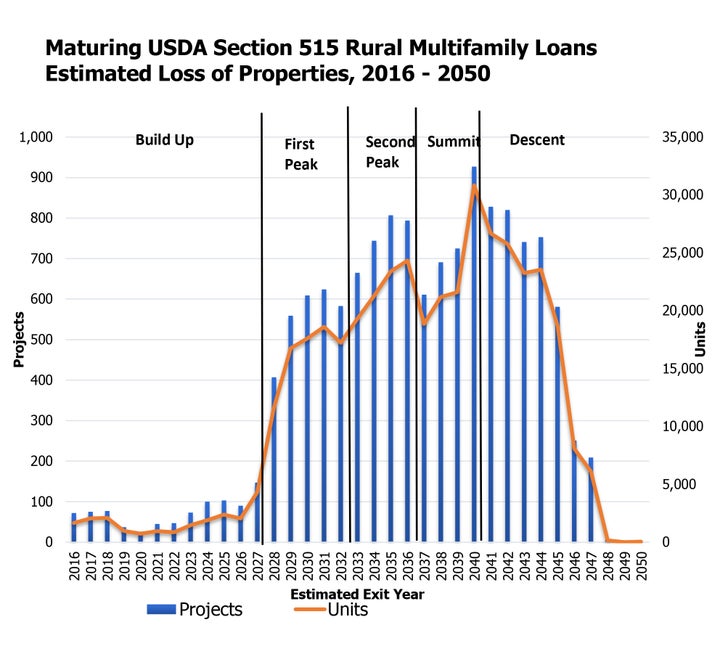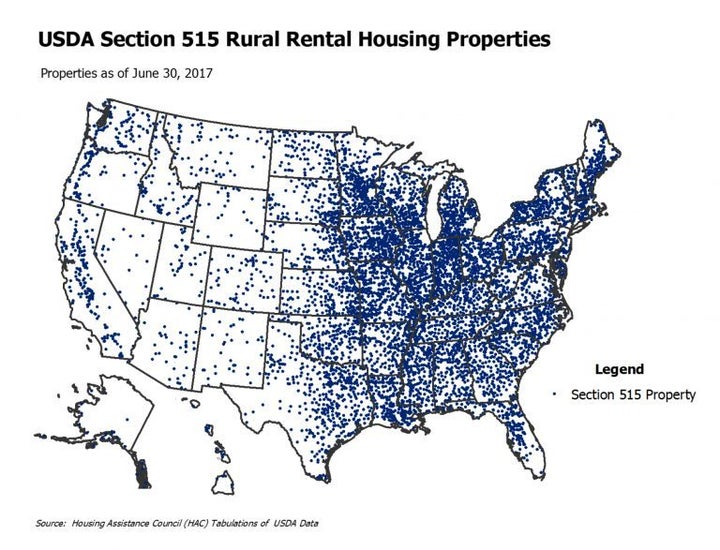
By Jan Pytalski
Rural America faces an affordable-housing crisis that, if left unchecked, could raise rents for low-income residents and contribute to rural population loss in coming years, said a national nonprofit organization.
“We’re learning that in rural housing, there is a crisis and people think that it’s different than urban America,” said Stephen Sugg, government relations manager at the Housing Assistance Council (HAC), which sounded the alarm during its biannual conference in Washington, D.C. earlier this month. “It looks different, but very high percentages of rural renters are paying over half their income in rent.”
HAC officials are worried about the future of an affordable housing program from the U.S. Department of Agriculture (USDA) that provides loans for buying or renovating buildings for affordable housing.
USDA’s Section 515 Rural Rental Housing is among the few rental housing programs specifically for rural communities. The program started in 1963 and has financed more than 533,000 apartment units in nearly 28,000 different multifamily developments. HAC’s data shows that 87 percent of all counties in the United States have at least one USDA property.
But the USDA program doesn’t have enough funding to entice property owners to keep their properties in the subsidized rental market as the Section 515 mortgages mature. That means hundreds of thousands of rental units are scheduled to leave the USDA affordable housing program in the next 25 years. The result is likely to be steep rent increases for rural residents who can least afford it.
“There are about 415,000 units still in existence in this program,” HAC’s CEO, David Lipsetz told the Daily Yonder at the conference in Washington, D.C. “Every single one of those units is on a time clock. Every single one of those units without some action to recapitalize the property is going to deteriorate.”
“We have these units, we have this stock,” Lipsetz said. “If we don’t fund it well enough to even keep what we have, we’re going to continue to depopulate rural places.”
The program supports mortgages for the builders of rental housing for low- and moderate-income families, elderly persons and persons with disabilities. After owners pay off the loans, they are generally no longer required to participate in rental programs for low- or moderate-income families. More than 90 percent of USDA’s Section 515 portfolio is more than 20 years old.

“When a USDA Section 515 loan ends for any reason, the property also loses its Section 521 Rental Assistance. Some properties are restricted to low-income use for a period of time after they leave the program. In instances where there is no restrictive use provision, owners may increase rents to levels their low-income tenants may not be able to afford,” according to a HAC report.
About 15,000 rental units will leave the program in 2028, if no changes are made in funding. That number will continue to grow through 2040, when more than 30,000 units will leave the program if property owners do not renew their participation.
The impact will likely be worst in the poorest counties, the HAC report says. Ninety percent of the nation’s 395 persistently poor counties (defined as having poverty rates over 20 percent for the past 30 years or more) have Section 515 rentals. Subsidized rental units make up a greater share of the housing stock in those counties, as well.
Protecting the housing stock for low- and moderate-income residents should be a priority for policy makers, Lipsetz said.
“The leading edge social science research now tells us that housing is one of the most powerful predictors of your wealth, of your economic mobility, your educational outcomes and very importantly your health outcomes,” he said.
The Daily Yonder, published by the nonprofit Center for Rural Strategies, covers the people, places and policies that affect small cities and rural communities.

Bertha Rice (left) and Doris Jean Franklin with the Christian Housing Development Organization of Columbus, Mississippi, participate in a discussion at the Housing Assistance Council conference.
